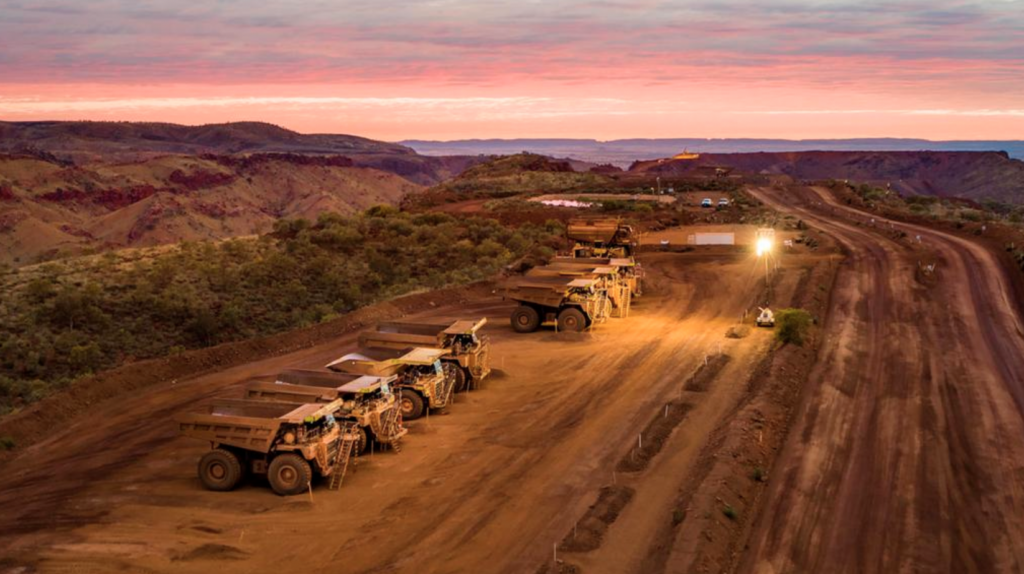
Article by Danielle Le Messurier courtesy of the West Australian.

Hancock Prospecting group chief executive Garry Korte has called for magnetite ore to be carved out of the Federal Government’s safeguard mechanism as he warns of “unintended consequences” of the policy.
Billionaire Gina Rinehart’s company is concerned that magnetite iron ore is not distinguished from hematite under the Government’s safeguard mechanism despite its potential to help the steel industry lower emissions.
The safeguard reforms, which came into force last Saturday, require Australia’s 215 biggest polluters to cut their emissions by about 5 per cent each year until the end of the decade.
While magnetite ore requires more investment and significantly more energy to produce compared to hematite, it results in a higher-grade product containing up to 70 per cent iron.
Mr Korte said the creation of a separate magnetite iron ore variable under the safeguard mechanism was critical to encourage investment in magnetite in Australia.
“Without (the variable), the safeguard mechanism will result in the offshoring of investment and reduction in value-add opportunities in Australia,” he told The West Australian.
“Australia will miss out on an opportunity to enlarge and diversify its economy whilst at the same time contributing to a significant reduction in global carbon emissions in the steel-making process.
“It is crucial that time is taken by government to make sure this significant safeguard mechanism reform does not have the unintended consequence of redirecting investment to other, more competitive countries, preventing the opportunity for magnetite production in Australia.”
Atlas Iron, part of the Hancock Prospecting group, is interested in entering the magnetite industry, having launched a feasibility study on its Ridley project near Port Hedland.
Mr Korte also said cutting red tape — rather than financial incentives — to encourage downstream processing of critical minerals should be the focus of governments.
He listed reducing approval times and regulations across the mining industry and ensuring companies have access to gas to support them during the energy transition as ideas the company has put to Government.
Hancock Prospecting believes reducing bureaucracy to accelerate the development of downstream processing facilities for critical minerals like lithium is low-hanging fruit compared to providing large government tax breaks, as some other WA miners have called for.
Mr Korte described approval processes for mines as “increasingly burdensome, time and staff consuming, expensive and risky”.
He noted that while approval times continue to rise across the board, one part of the process — the EPA PER assessment — had increased 50 per cent in the last five years, now taking three years on average for iron ore projects.
“Without reducing regulations and approval times across the entire mining industry and ensuring access to clean gas, the transition to net zero the Government wishes to achieve in its timeline, is simply unachievable,” Mr Korte said.
The Federal Government is aiming to reach net zero emissions by 2050 aided by the increasing uptake of renewable technologies and investment in critical minerals.
It released its long-awaited critical minerals strategy this month, which committed a further $500 million to support downstream processing through the Northern Australia Infrastructure Facility.
Building downstream processing could generate $133.5 billion in GDP and 262,600 jobs by 2040, according to modelling commissioned by the Department of Industry, Science and Resources.
The Government will conduct a review of the list of Australia’s critical minerals — used to manufacture clean energy technologies such as electric vehicles, batteries, solar panels and wind turbines — by the end of the year.
Hancock recently finalised a lithium joint venture, agreeing to spend up to $36 million to earn 51 per cent of the lithium rights at Mt Bevan, 250km north of Kaloorlie, from Hawthorn Resources and the Indian-backed Legacy Iron Ore.
“The world is going to need vastly increased volumes of rare earths, lithium, copper and nickel and various other minerals in order to meet the commitments governments around the world have made to achieve net zero,” Mr Korte said.















